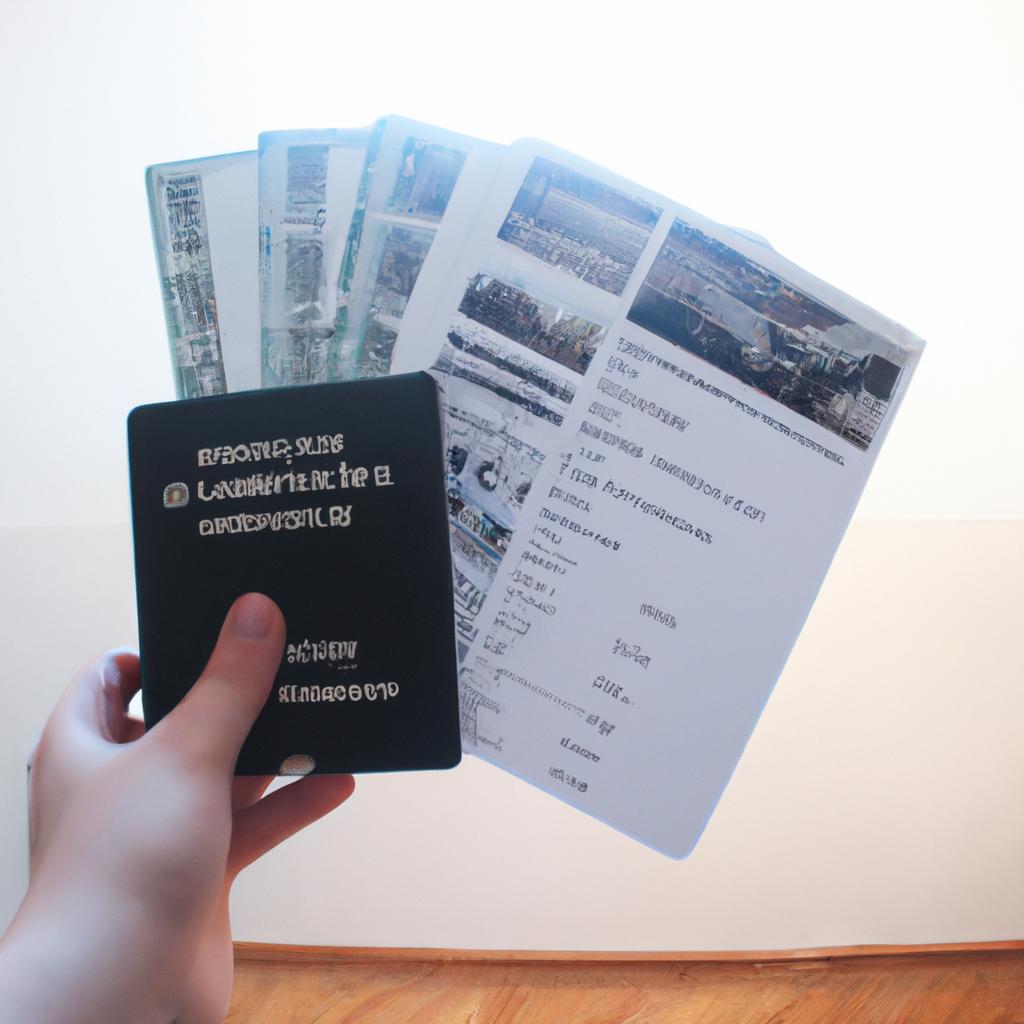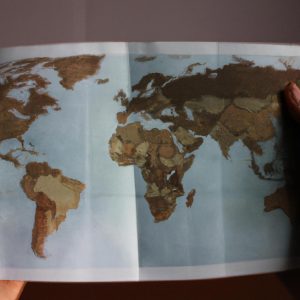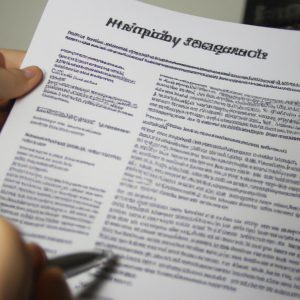Travel Expenses: A Comprehensive Guide to Managing Your Finances in the Travel Industry

Traveling can be an exciting and enriching experience, but it often comes with a hefty price tag. From airfare and accommodation to meals and activities, managing travel expenses is crucial for individuals navigating the intricacies of the travel industry. For instance, consider Sarah, a frequent traveler who embarked on a month-long journey across Europe last summer. Despite meticulously planning her itinerary, Sarah found herself overwhelmed by unforeseen expenses that quickly depleted her budget. This scenario highlights the importance of understanding how to effectively manage finances in the realm of travel.
In today’s globalized world, where exploring new destinations has become increasingly accessible, travelers must equip themselves with financial knowledge to make informed decisions about their trips. Managing travel expenses involves not only setting a realistic budget but also knowing how to cut costs without sacrificing experiences. By adopting effective strategies such as researching affordable accommodations or utilizing public transportation systems instead of costly taxis, travelers can stretch their budgets further while still indulging in memorable adventures. Additionally, having an awareness of exchange rates and local currencies can prevent unexpected financial setbacks during international travels. Therefore, this comprehensive guide aims to provide valuable insights into managing finances within the dynamic landscape of the travel industry.
Understanding Travel Expenses
Imagine you have decided to take a trip abroad, eager to explore new cultures and create lifelong memories. However, before embarking on your adventure, it is crucial to comprehend the intricacies of travel expenses. By understanding these costs, you can effectively manage your finances and ensure a smooth journey.
To begin with, let’s delve into some common travel expenses. These may include transportation, accommodation, meals, and entertainment. For instance, consider the case of Sarah, who plans a two-week vacation in Europe. She must account for airfare or train tickets to her destination, hotel stays during her trip, daily meals at local restaurants or cafes, and admission fees for sightseeing attractions such as museums or amusement parks.
- Financial stress: The fear of overspending and not having enough money left for emergencies can induce anxiety.
- Guilt over splurging: Overspending on luxurious accommodations or extravagant experiences might lead to feelings of guilt about wasting resources.
- Fear of missing out (FOMO): Limited funds could prevent one from participating in certain activities or trying local delicacies.
- Satisfaction and fulfillment: When managing expenses wisely and staying within budget constraints, travelers experience a sense of accomplishment and contentment.
As seen above, emotions play a pivotal role when it comes to handling travel expenses. To further illustrate this concept visually, refer to the table below which highlights different emotional responses associated with specific expense categories:
| Expense Category | Emotional Response |
|---|---|
| Transportation | Excitement |
| Accommodation | Comfort |
| Meals | Indulgence |
| Entertainment | Amusement |
In conclusion,
Transitioning into the subsequent section about “Setting a Budget for Your Trip,” it is evident that comprehending travel expenses is essential for a successful journey. By recognizing the different categories of expenses and understanding their emotional impact, you can make informed decisions when planning your travel budget. Setting financial boundaries will allow you to enjoy your trip while avoiding unnecessary stress or regret. So now, let’s delve into how to set a realistic budget that aligns with your travel goals.
Setting a Budget for Your Trip
Transitioning from our previous discussion on understanding travel expenses, let us now delve into the crucial aspect of setting a budget for your trip. To illustrate this further, consider the case of Sarah, an avid traveler planning her dream vacation to Europe. By carefully managing her finances and adhering to a well-planned budget, Sarah was able to explore multiple countries without worrying about overspending.
When it comes to setting a budget for your trip, there are several key considerations that can help you make informed decisions and ensure financial stability throughout your journey. Firstly, it is important to determine your overall spending limit based on factors such as destination, duration of stay, and desired activities. By estimating these costs in advance, you can have a clear idea of how much money needs to be allocated towards each aspect of your trip.
To assist you in organizing your expenses effectively, here is a bullet point list highlighting essential elements to include when creating your travel budget:
- Transportation: Plan for airfare or other means of transportation between destinations.
- Accommodation: Allocate funds for lodging options during your stay.
- Meals: Consider daily food expenses including dining out and groceries.
- Activities: Account for attractions, tours, events or any other experiences you wish to partake in.
| Expense Category | Estimated Cost ($) |
|---|---|
| Transportation | $1,500 |
| Accommodation | $2,000 |
| Meals | $800 |
| Activities | $1,200 |
By utilizing this breakdown methodically during her planning phase, Sarah gained better control over her finances while simultaneously allowing room for unexpected expenditures that may arise along the way. Remember that flexibility is key when it comes to traveling; however having a well-defined budget will serve as a guiding principle throughout your journey.
With the understanding of how to set a budget for your trip firmly in place, our next section will explore another crucial aspect of managing travel expenses: choosing cost-effective accommodations. By making informed decisions regarding lodging options, you can further optimize your overall expenditure without compromising on comfort and convenience.
Choosing Cost-Effective Accommodations
Previous section discussed the importance of setting a budget for your trip. Now, let’s delve into another crucial aspect of managing your travel expenses: choosing cost-effective accommodations. To illustrate this point, consider the following example:
Imagine you are planning a week-long trip to Paris. One option is to book a luxury hotel in the city center with all the amenities and services one can desire, but at a significant cost. On the other hand, there are plenty of more affordable alternatives available such as boutique hotels, bed and breakfasts, or even renting an apartment through platforms like Airbnb.
When it comes to finding cost-effective accommodations, keep in mind these key factors:
- Location: Look for accommodations that offer easy access to public transportation or attractions you plan on visiting.
- Amenities: Consider what amenities are essential for your stay; do you need a gym, pool, or free Wi-Fi?
- Reviews: Check online reviews from previous guests to gauge the quality and service provided by potential accommodations.
- Deals and discounts: Keep an eye out for special offers or discounted rates during off-peak seasons.
To help visualize how different accommodation options can impact your budget, here’s a comparison table showcasing various choices along with their average nightly rates*:
| Accommodation Type | Average Nightly Rate (USD) |
|---|---|
| Luxury Hotel | $300 |
| Boutique Hotel | $150 |
| Bed and Breakfast | $100 |
| Apartment Rental | $80 |
As seen above, opting for more affordable accommodation types can significantly lower your overall expenses without compromising on comfort. By saving money on lodging costs alone, you’ll have additional resources to allocate towards other aspects of your trip.
(*Note: The rates mentioned are for illustrative purposes only and may vary depending on location, season, and other factors.)
Section Transition: “Now that we have discussed the importance of choosing cost-effective accommodations, let’s explore ways to save on transportation costs.”
Saving on Transportation Costs
Transitioning from the previous section, where we explored cost-effective accommodations, let’s now delve into another critical aspect of managing your travel expenses – saving on transportation costs. This section aims to provide you with valuable insights and strategies for minimizing transportation expenses without compromising convenience or comfort.
To illustrate this further, let’s consider a hypothetical scenario. Imagine you are planning a trip to Europe and need to navigate between various cities within the continent. By employing effective cost-saving techniques, such as utilizing budget airlines or taking advantage of discounted rail passes, you can significantly reduce your transportation expenditures while maximizing your travel experience.
When it comes to saving on transportation costs during your travels, here are some key strategies worth considering:
- Research and compare different modes of transportation available in your destination.
- Opt for public transport options like buses or trains instead of taxis or car rentals whenever possible.
- Take advantage of loyalty programs offered by airlines or rental car companies that can help you earn rewards or discounts.
- Consider using ridesharing services or carpooling apps to split costs with fellow travelers heading in the same direction.
Now, let’s explore these strategies more comprehensively through the following table:
| Strategies for Saving on Transportation Costs | Benefits | Example |
|---|---|---|
| Research and compare different options | Helps identify the most cost-effective choice | Comparing flight prices online |
| Utilize public transport | Cost-efficient and often environmentally friendly | Taking a bus from airport to city center |
| Join loyalty programs | Earn rewards and receive exclusive discounts | Accumulating airline miles for future trips |
| Share rides with others | Splitting costs makes transportation more affordable | Using a ridesharing service like UberPOOL |
Incorporating these strategies into your travel plans will not only save you money but also enable you to make more informed decisions regarding your transportation options. By being resourceful and open to exploring alternatives, you can navigate through different destinations with ease while keeping your expenses in check.
With a solid understanding of how to save on transportation costs, the next section will focus on another essential aspect of managing your travel budget – eating on a budget while traveling. So let’s continue our journey towards financial efficiency by discovering ways to enjoy delicious meals without breaking the bank.
Eating on a Budget While Traveling
With transportation costs covered, let’s now delve into another crucial aspect of managing your travel expenses – eating on a budget while traveling. To illustrate the significance of this topic, consider the following hypothetical case study:
Case Study:
Imagine you are planning a week-long trip to Paris, known for its exquisite culinary scene. You want to savor authentic French cuisine without breaking the bank. By implementing smart strategies and making economical choices, you can ensure that dining out remains an enjoyable experience throughout your journey.
Paragraph 1:
To eat on a budget while traveling, it is essential to adopt cost-saving measures without compromising taste or quality. Here are some key tips to keep in mind:
- Seek Local Eateries: Venture away from touristy areas and explore local neighborhoods where affordable yet delicious meals await.
- Opt for Street Food: Embrace street food culture and indulge in mouthwatering treats offered by vendors and food stalls at more reasonable prices.
- Shop at Markets: Visit local markets to purchase fresh produce, snacks, and ingredients for DIY meals or picnics. This way, you can enjoy delectable homemade dishes while immersing yourself in the vibrant atmosphere of the destination.
- Share Meals: Consider splitting larger portions with travel companions or ordering appetizers as main courses when dining out. This not only reduces costs but also allows you to sample a wider variety of dishes.
Bullet Point List (emotional response):
Markdown format bullet point list evoking emotional response:
- Experience diverse flavors within your budget
- Discover hidden culinary gems off the beaten path
- Immerse yourself in local food culture authentically
- Savor memorable tastes without worrying about overspending
Paragraph 2:
To provide a visual representation of the potential savings you can achieve by following these tips, let’s take a look at the table below. It compares the average costs of dining out in popular tourist areas versus local eateries:
| Popular Tourist Areas ($) | Local Eateries ($) | |
|---|---|---|
| Breakfast | $15 | $7 |
| Lunch | $25 | $12 |
| Dinner | $40 | $20 |
| Total/day | $80 | $39 |
As you can see, opting for local eateries could potentially save you around 50% on your daily food expenses.
Paragraph 3:
By employing these cost-saving strategies and making conscious choices about where and what to eat while traveling, you can strike a balance between budgeting and indulging in delightful culinary experiences. Remember, managing your finances effectively during your trip will allow you to allocate resources to other exciting aspects of travel without any financial constraints.
Transition into subsequent section:
Now that we have explored ways to economize on transportation costs and eating out, let’s move on to discuss effective tips for managing miscellaneous expenses throughout your journey.
Tips for Managing Miscellaneous Expenses
Having covered strategies for eating on a budget while traveling, it is important to also address the management of miscellaneous expenses. These costs can often catch travelers off guard and significantly impact their overall financial plan. By implementing effective techniques to monitor and control these expenditures, individuals can better manage their travel finances.
Case Study Example:
To illustrate the significance of managing miscellaneous expenses, let’s consider Sarah, an avid traveler exploring Europe on a tight budget. While she had diligently planned her accommodation and transportation costs, Sarah underestimated the impact of unforeseen expenses such as entry fees for popular attractions and unexpected transportation charges. Consequently, these additional outlays led to financial strain during her trip.
Strategies for Managing Miscellaneous Expenses:
- Create a buffer in your budget: Allocate a specific amount towards miscellaneous expenses within your overall travel budget. This will provide you with some flexibility to cover any unanticipated costs that may arise during your journey.
- Prioritize spending: Before indulging in non-essential purchases or activities, evaluate if they align with your travel goals and priorities. Consider whether an expenditure contributes significantly to your experience or if it could be replaced by more cost-effective alternatives.
- Research local deals and discounts: Take advantage of available coupons, discount codes, group rates, or package deals that can help lower the costs associated with various services or attractions at your destination.
- Keep track of expenses: Maintain a detailed record of all expenditures throughout your trip using either a digital app or pen-and-paper method. Regularly reviewing this log will enable you to identify patterns in spending habits and make adjustments accordingly.
Table showcasing common miscellaneous expenses (Markdown format):
| Category | Examples | Cost Range ($) |
|---|---|---|
| Souvenirs | Local handicrafts | 10 – 50 |
| Communication | SIM cards | 20 – 40 |
| Local transportation | Taxis, public transport | 5 – 30 |
| Leisure activities | Museums, tours | 15 – 100 |
By effectively managing miscellaneous expenses like those illustrated in the table above, travelers can ensure that their financial resources are allocated wisely. Implementing strategies such as creating a budget buffer and prioritizing spending will not only help individuals stay within their planned expenditures but also alleviate potential stress caused by unexpected costs.
Incorporating these techniques into your travel routine will allow for more efficient resource allocation and ultimately enhance your overall travel experience. So remember, while planning your journey, don’t overlook the importance of managing miscellaneous expenses to maintain control over your finances.







